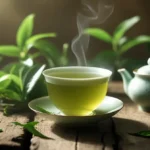Table of Contents
Is barley tea yin or yang? This ancient grain has been part of human nutrition since 8000 BC, and its classification in traditional Chinese medicine offers fascinating insights into how we balance our bodies. As someone who values both modern nutrition and ancient wisdom, I’ve found the yin-yang philosophy particularly enlightening when choosing what to consume.
Interestingly, yin energy is responsible for moistening and cooling bodily functions, while yin foods tend to decrease the body’s overall temperature. Barley tea, a light and refreshing drink popular throughout Asia, fits into this traditional system in specific ways. Moreover, understanding the balance between yin and yang foods becomes essential when we consider that a well-balanced meal should ideally consist of three parts yang and two parts yin foods.
In this article, I’ll explore barley tea’s place in the yin-yang spectrum, how it affects your body’s energy, and why this matters from a Chinese medicine perspective. Whether you’re curious about traditional dietary wisdom or simply wondering if barley tea is good for your specific constitution, you’ll discover how this ancient beverage might fit into your modern wellness routine.
The Philosophy of Yin and Yang in Food
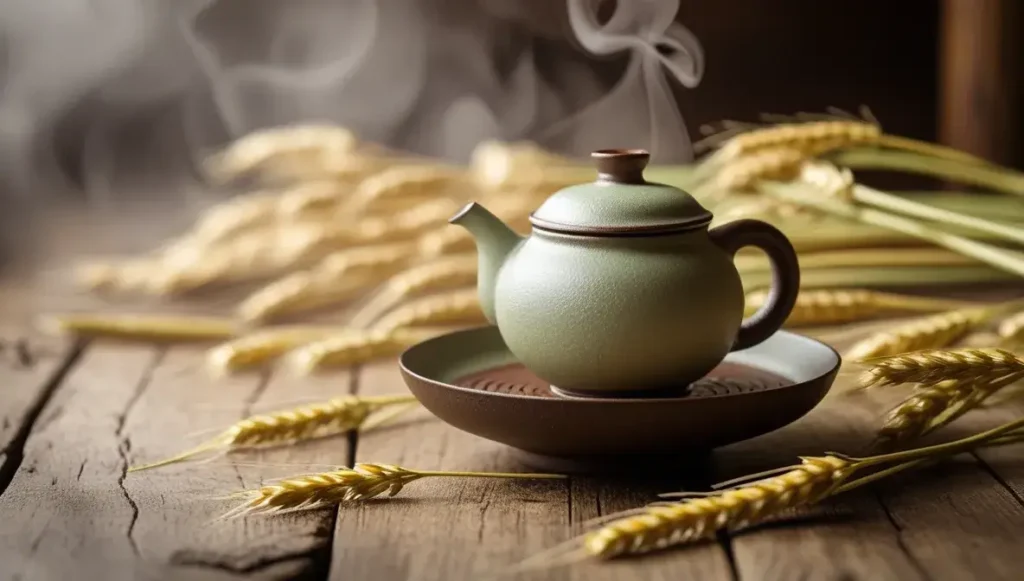
“According to Taoist philosophy, good health is a state in which, opposing energies of yin and yang, are perfectly balanced in the body.” — Tea Soul, Tea education and culture platform
The ancient philosophy of yin and yang forms the cornerstone of Traditional Chinese Medicine (TCM), extending far beyond simple concepts to influence how we understand food’s impact on our well-being. This dualistic approach provides a framework for understanding how different foods affect our bodies and why maintaining balance matters for optimal health.
What yin and yang represent in the body
Fundamentally, yin and yang represent complementary forces that exist throughout nature and within our bodies. In TCM, yin is associated with qualities that are cooling, dark, passive, and feminine, while yang embodies warmth, light, activity, and masculine traits. From an anatomical perspective, yin connects to the lower body regions, including the pelvis and lower extremities, whereas yang corresponds to upper body areas like the head, neck, and back.
These forces aren’t just abstract concepts—they directly influence physical functions. Yang energy warms the body while yin serves as the body’s cooling system. When either force becomes excessive or deficient, the body shows symptoms of imbalance. For instance, too much yang might manifest as inflammation or hyperactivity, whereas excess yin could appear as coldness or fatigue.
How food is classified as yin or yang
Foods in TCM are categorized based on their energetic properties rather than just their nutritional content. These properties include:
- Temperature: Foods are classified as cold, cool, neutral, warm, or hot
- Taste: Sweet, sour, bitter, pungent, or salty
- Effect on organs: How they influence specific body systems
Yang foods tend to be warming, drying, and energizing—typically sweet, spicy or pungent with warm colors like red or orange. Examples include red meat, ginger, and cinnamon. Conversely, yin foods are cooling and moistening—often bitter or salty with higher water content and cool-toned colors. Cucumber, watermelon, and tofu exemplify yin foods.
Additionally, cooking methods influence a food’s yin-yang classification. Frying and roasting are considered yang techniques, whereas boiling and steaming are yin.
Why balance matters in traditional Chinese medicine
Balance between yin and yang is essential because TCM views health as the harmonious equilibrium of these opposing forces. According to ancient texts, “Cold disease should be treated by hot food, while febrile disease should be treated by cold food”. This approach aims to prevent disease, remove illness, and slow aging.
Food therapy in TCM focuses on maintaining balanced nutrition through diet, whereas medical diet therapy combines nutrition with medicinal properties to achieve yin-yang balance. This personalized approach considers individual constitution, activity level, climate, season, and specific health goals.
Through understanding these principles, we can use food as medicine—selecting yin or yang foods based on our body’s needs rather than following generic recommendations.
👉 Discover the Premium Barley Tea Blend You’ve Been Craving 👈
Is Barley Tea Yin or Yang?
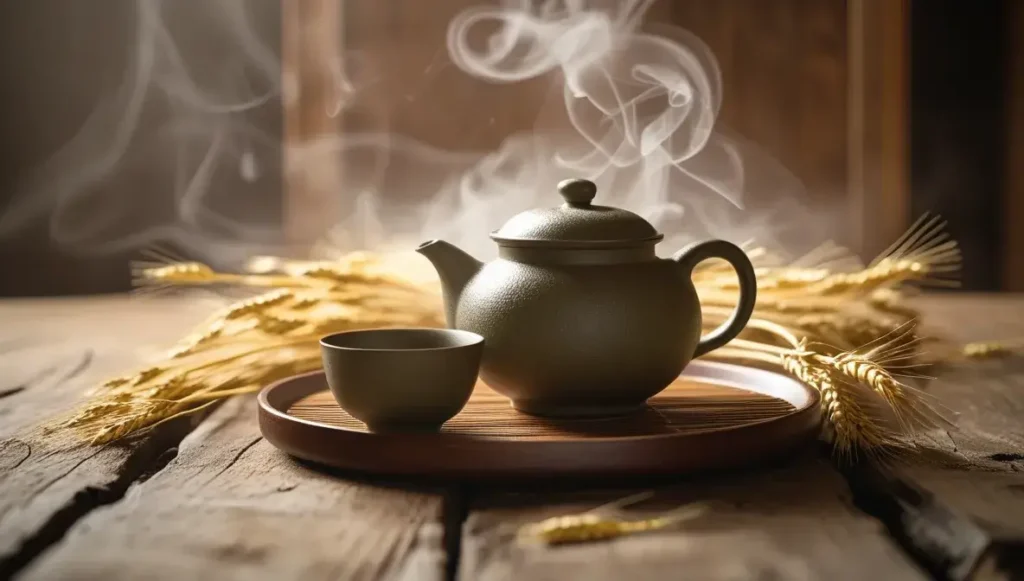
Barley tea stands firmly in the yin category within traditional Chinese medicine, making it an excellent choice for cooling and balancing an overheated body. This ancient beverage has been valued for centuries across East Asia not just for its distinctive flavor but also for its medicinal properties.
Barley tea’s cooling nature
Fundamentally, barley tea possesses a natural cooling effect on the body. In Eastern medicine, barley is classified as a ‘yin’ food that naturally reduces core body temperature. This cooling property makes it especially valuable during hot summer months. Indeed, in China, barley tea has been used traditionally specifically for its cooling properties. The refreshing sensation isn’t just subjective—barley tea actually lowers overall body temperature, making it particularly beneficial during hot weather.
Barley as a yin-supporting grain
In Traditional Chinese Medicine (TCM), barley is specifically recognized for its ability to tonify qi, blood, and yin. The grain itself is categorized as cool in temperature with sweet and salty flavors. Notably, barley appears consistently in lists of yin-nourishing foods alongside other cooling grains like millet. Its yin-supporting qualities help counteract symptoms of excess heat or yin deficiency. Furthermore, barley moistens dryness and promotes diuresis, aligning perfectly with yin energy’s role in cooling and hydrating the body.
How preparation method affects its energy
The way barley tea is prepared significantly influences its energetic properties. Traditionally, it’s made by steeping roasted barley grain in hot water. This roasting process, although a yang cooking method, doesn’t change barley’s fundamentally cooling nature. Nevertheless, it does enhance certain properties—roasted barley becomes more alkalizing and can be consumed either hot or cold depending on the season and one’s constitution.
Through the steeping process, beneficial compounds from the roasted grain are extracted into the water. Essentially, higher roasting temperatures lead to greater release of soluble solids in water, affecting both the tea’s nutritional profile and its medicinal properties. As a caffeine-free beverage, barley tea offers cooling benefits without the stimulating effects that might counteract its yin-supporting qualities.
Signs You May Need More Yin Foods
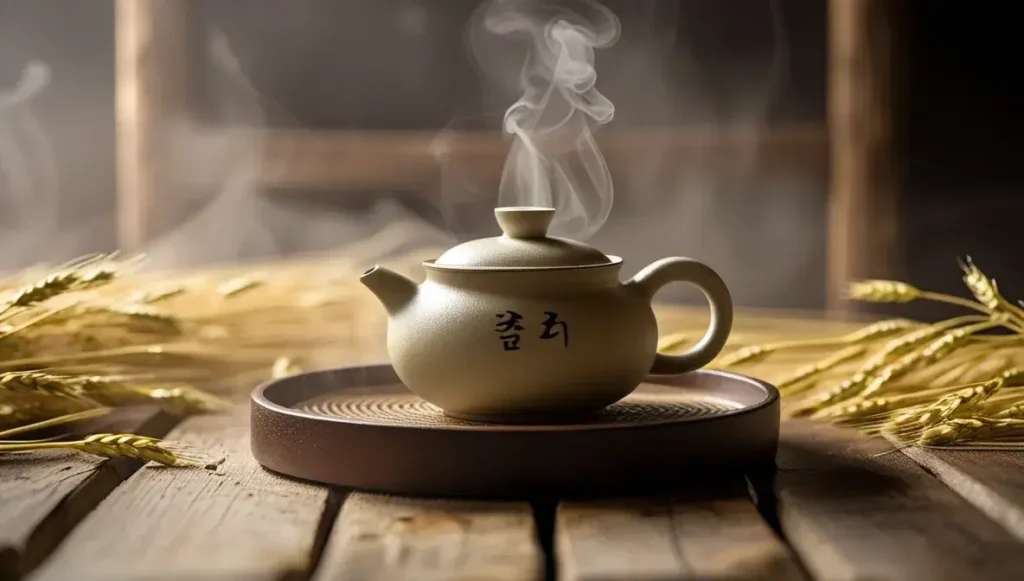
Recognizing when your body needs more yin foods can help you restore balance before minor symptoms become serious health concerns. Traditional Chinese Medicine views these signs as your body’s way of communicating an internal imbalance that needs attention.
Common symptoms of yin deficiency
Your body often sends clear signals when yin energy becomes depleted. Physical manifestations typically include persistent dryness affecting the mouth, skin, eyes, and throat. Many people experience uncomfortable heat sensations, particularly in the palms, soles, and chest area. Night sweats are another telltale indicator, often accompanied by insomnia or disturbed sleep.
Beyond physical symptoms, emotional changes frequently occur. You might notice increased irritability, anxiety, restlessness, or difficulty staying calm. This happens because yin’s cooling nature helps balance emotions that yang energy can intensify.
Depending on which organ system is affected, you might experience specific symptoms:
- Heart yin deficiency: insomnia, palpitations, forgetfulness, anxiety
- Liver yin deficiency: dizziness, blurry vision, dry eyes, irritability
- Kidney yin deficiency: lower back soreness, tinnitus, hair loss, decreased libido
How diet can help restore balance
Fortunately, appropriate dietary choices can significantly replenish depleted yin. Foods with cooling properties and high moisture content work best for restoring balance. These include many fruits (especially watermelon, cucumber, pear), tofu, kidney beans, and leafy greens.
Barley, classified as a yin-supporting grain, makes an excellent addition to a yin-nourishing diet. Consuming barley tea regularly can help address symptoms of heat and dryness without the stimulating effects of caffeine.
For maximum benefit, consider eating small, frequent portions of yin foods instead of large, infrequent meals. This approach prevents digestive stagnation while still providing necessary nourishment. Simultaneously, reducing consumption of stimulants like caffeine, alcohol, and spicy foods prevents further yin depletion.
When to consult a practitioner
Seek professional guidance if symptoms persist despite dietary changes. A qualified TCM practitioner can provide personalized recommendations based on your specific pattern of imbalance. This becomes particularly important if you experience severe symptoms like persistent insomnia, extreme emotional instability, or concerning physical symptoms like excessive night sweats.
TCM practitioners often recommend personalized herbal formulas alongside dietary therapy for faster relief, especially in cases of longstanding yin deficiency. Remember that yin deficiency typically develops over years, so restoration likewise requires consistent effort and time.
👉 Enjoy Top-Rated Barley Tea That Transforms Your Wellness Routine 👈
How to Use Barley Tea for Yin Nourishment
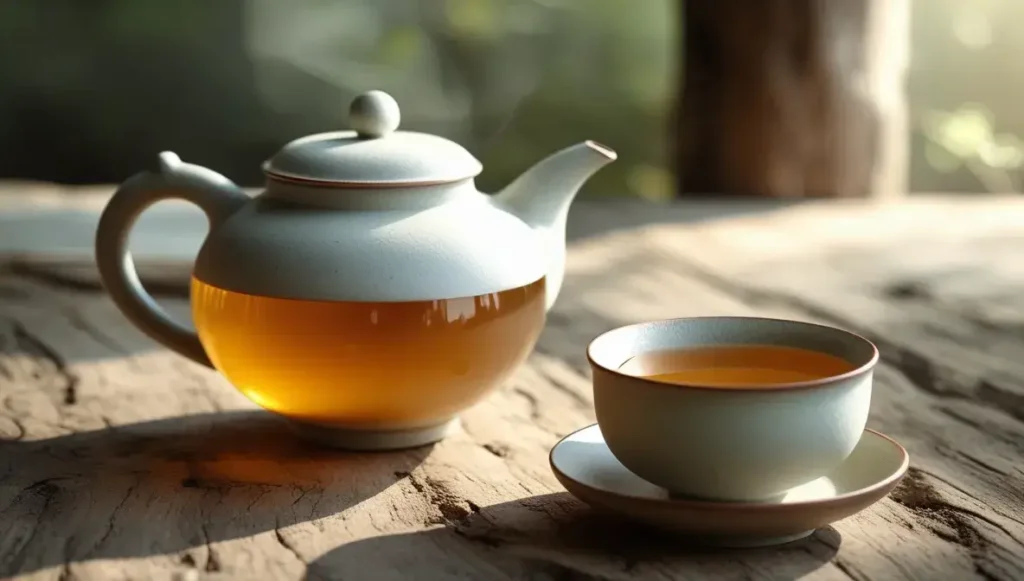
“Generally it seems that green teas are recommended for warmer months and black/roasted/puerh is for winter temperatures for their cooling/warming properties.” — Tea Happiness, Tea education and culture blog
Maximizing the yin-nourishing benefits of barley tea requires strategic consumption timing plus thoughtful food pairings. As a naturally cooling beverage, this ancient drink offers practical ways to restore balance when incorporated properly into your daily routine.
Best times to drink barley tea
Given its cooling properties, barley tea works exceptionally well during summer months when consumed chilled. Thankfully, as a caffeine-free beverage, you can enjoy it throughout the day without disturbing your sleep. In Japan, many people drink it instead of water, utilizing its natural ability to cool the body’s core temperature. For those experiencing yin deficiency symptoms, having a cup before bedtime might help combat night sweats or insomnia.
Pairing barley tea with other yin foods
To amplify yin-nourishing effects, combine barley tea with complementary foods:
- Fruit smoothies with honey and banana
- Fish dishes with coconut milk
- Dishes featuring kidney beans
- Miso soup with tofu and seaweed
These pairings create synergistic effects that enhance cooling and moistening properties throughout your system.
Avoiding yang foods that counteract benefits
Consequently, certain foods can diminish barley tea’s yin benefits. Eliminate stimulating substances such as caffeine, alcohol, sugar, and strongly heating spices when focusing on yin nourishment. Additionally, avoid spicy foods, curry, barbecued items, and certain herbs like cinnamon, garlic, and ginger that could counteract the cooling effects.
Does barley tea have caffeine?
Fundamentally, barley tea contains zero caffeine, making it an ideal alternative for those sensitive to stimulants. Unlike traditional teas made from Camellia sinensis leaves, barley tea comes solely from roasted barley grains, allowing unlimited consumption without the jittery side effects of caffeinated beverages.
Is barley tea good for you?
Absolutely! Beyond yin nourishment, barley tea offers multiple health advantages. It supports digestion, potentially assists with weight management, and may help control blood sugar levels. Its zero-calorie profile makes it excellent for hydration, plus it contains beneficial antioxidants. Regular consumption might even improve oral health by reducing harmful bacteria in saliva.
👉 Unlock Ultimate Barley Tea Flavor with Our Top Selection 👈
Conclusion
Throughout history, barley tea has earned its place as a respected yin beverage in Traditional Chinese Medicine. This ancient grain-based drink offers cooling properties that help restore balance, especially during hot weather or when experiencing symptoms of excess heat. Certainly, understanding barley tea’s yin nature provides valuable insight into how this simple beverage can support overall wellness within the traditional framework of balanced energy.
The yin-yang philosophy teaches us that health emerges from harmony between opposing forces. Therefore, paying attention to our body’s signals helps us make wiser dietary choices. After learning about barley tea’s cooling properties, I’ve come to appreciate how this caffeine-free alternative fits perfectly into a yin-nourishing regimen without the stimulating effects that might disrupt sleep or increase internal heat.
Undoubtedly, one of barley tea’s greatest strengths lies in its versatility. You can enjoy it hot or cold depending on your constitution and the season. Though classified as yin, its preparation through roasting adds subtle complexity to its properties while maintaining its fundamental cooling nature. This makes it an excellent choice year-round for anyone looking to incorporate traditional wisdom into their modern wellness routine.
Finally, remember that balance remains the ultimate goal in TCM. While barley tea offers wonderful yin support, each person’s needs differ based on their unique constitution and current state of health. Thus, listening to your body and adjusting your consumption accordingly will help you maximize the benefits of this ancient beverage. The next time you feel overheated or notice signs of yin deficiency, perhaps reaching for a refreshing cup of barley tea might be exactly what your body needs to restore harmony from within.
Key Takeaways
Understanding barley tea’s yin classification in Traditional Chinese Medicine can help you make informed choices about when and how to use this ancient beverage for optimal wellness and body balance.
• Barley tea is classified as a yin food in TCM, offering natural cooling properties that help reduce body temperature and restore balance during hot weather or heat-related symptoms.
• Signs you may need more yin foods include persistent dryness, night sweats, insomnia, irritability, and heat sensations in palms and chest areas.
• As a caffeine-free beverage, barley tea can be consumed throughout the day without disrupting sleep, making it ideal for yin nourishment anytime.
• Maximize benefits by pairing barley tea with other yin foods like tofu and cucumber while avoiding yang foods such as spicy dishes and stimulants.
• Balance remains key in TCM—listen to your body’s signals and adjust consumption based on your unique constitution and seasonal needs for optimal health harmony.
The ancient wisdom of yin-yang food classification offers practical guidance for modern wellness, with barley tea serving as an accessible tool for cooling excess heat and supporting overall energetic balance in daily life.
FAQs
Q1. Is barley tea considered yin or yang in Traditional Chinese Medicine? Barley tea is classified as a yin food in Traditional Chinese Medicine. It has cooling properties that help reduce body temperature and restore balance, especially during hot weather or when experiencing heat-related symptoms.
Q2. How does barley tea affect the body according to Chinese medicine? According to Chinese medicine, barley tea has a cooling effect on the body. It can help tonify qi, blood, and yin, while also supporting digestion and potentially assisting with weight management and blood sugar control.
Q3. When is the best time to drink barley tea? Barley tea can be consumed throughout the day as it’s caffeine-free. It’s particularly beneficial during summer months when consumed chilled. For those experiencing yin deficiency symptoms, drinking a cup before bedtime might help combat night sweats or insomnia.
Q4. Can barley tea help with specific health issues? Yes, barley tea may help with various health issues. It’s traditionally used to address fever, cough, lack of appetite, and recurrent diarrhea in children. Its cooling properties can also help balance “heatiness” in the body according to Chinese medicine principles.
Q5. How does barley tea compare to other grains in terms of yin and yang? While some grains like rice are considered neutral in the yin-yang spectrum, barley tea is distinctly yin. This makes it particularly useful for cooling and balancing the body, especially when compared to more neutral or yang-leaning foods and beverages.
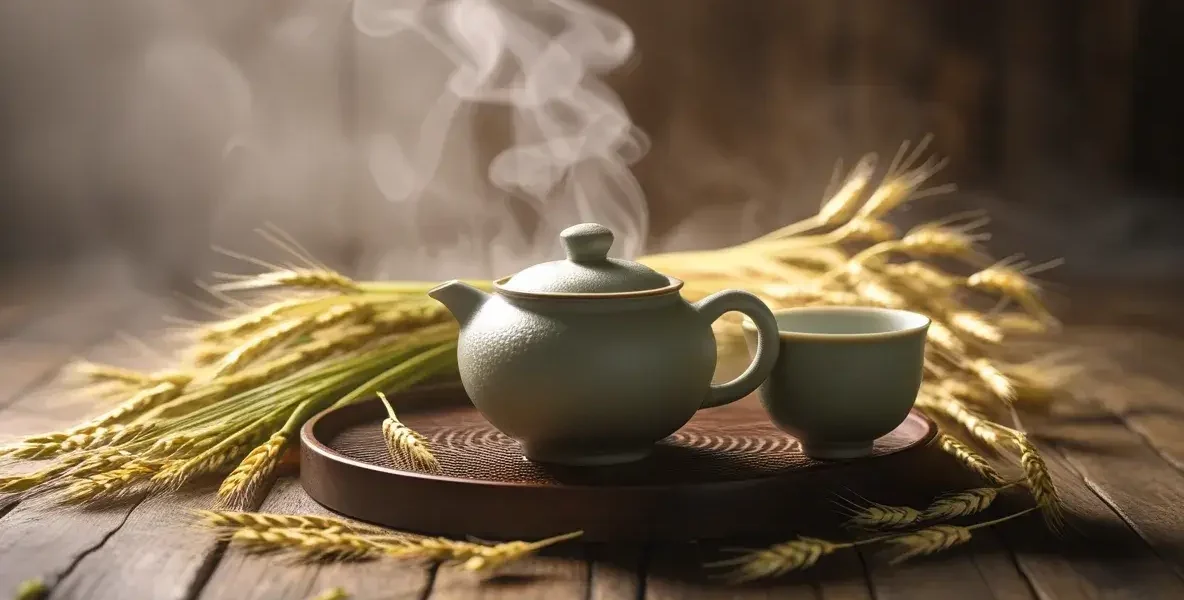

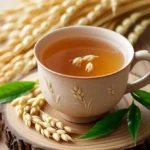


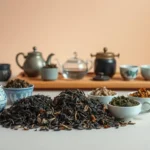



![[4] Ancient Principles of Japanese Tea Ceremony: A Master's Guide for 2025 4 principles of japanese tea ceremony](https://www.goteaworld.com/wp-content/uploads/2025/09/4-principles-of-japanese-tea-ceremony-150x150.webp)
